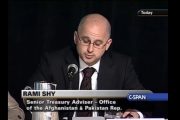
More than two and a half years have passed since massacre at Virginia Tech left over 30 students and faculty dead in the wake of Seung-Hui Cho’s shooting spree, and the Department of Education has now determined that university was in violation of federal law.
Last January, the Department of Education (DOE) found that Virginia Tech had violated the Clery Act, but in the intervening months the university has had the opportunity to respond to the department’s finding.
The Jeanne Clery Disclosure of Campus Security Policy and Campus Crime Statistics Act (or Clery Act) became law in 1990. (The act was named for a Lehigh University freshman who was murdered by a fellow student in 1986.) One of the provisions of the act is the requirement that educational institutions are required to provide timely warnings of criminal acts that pose a threat to the safety of faculty, employees, or students.
The December 9 ruling by the DOE means that Virginia Tech will now face modest fines, and will lose some federal student aid. According to the Associated Press:
The university could lose some or all of the $98 million in student financial aid that it receives from the federal government, and could be fined up to $55,000 for two violations — failing to issue a timely warning and not following its own emergency notification policy.
Any sanctions will be decided by a Department of Education panel and federal officials have not provided a timeline for when sanctions might be announced. Virginia Tech spokesman Larry Hincker said the school likely will appeal any sanctions.
Some of the arguments in Tech’s defense centered around the definition of a “timely” warning. The university argued that there was no definition of “timely” until two years after the shooting, when the DOE required schools to immediately notify people on campus upon confirmation of a dangerous situation or an immediate threat.
The university argued that the definition of “timely” is still not clear.
“Today’s ruling could add even more confusion as to what constitutes a ‘timely warning’ at a time when unambiguous guidance is needed,” Hincker said. “It appears that timely warning is whatever the Department of Education decides after the fact.”
For the families of the victims, the debate between a federal bureaucracy and a university administration over what constitutes a “timely warning” is of little comfort.
The actions by the DOE, assuming the role of judge and jury in determining the guilt or innocence of a university’s administration and then apparently meting out punishment on current or future students by its decisions regarding the allocation of student financial aid, does nothing to address future security concerns — except, perhaps, in so far as some bureaucrats may believe educational institutions find the risk of losing student aid a greater concern than potential harm to their students. (This leaves aside, for the moment, the entire question of the constitutionality of federal expenditures for student financial aid.)
Students at Texas State University in San Marcos have a more immediate, and constitutional, solution in mind to the problem of campus violence. By a vote of 24 to 10, the student government passed a resolution supporting a bill before the Texas legislature that would authorize anyone with a concealed carry license to carry a concealed handgun on campus. (As reported previously for The New American, HB 86, which was introduced by Rep. David Simpson [R-Dist. 7] would permit such “campus carry” throughout the Lone Star state if it becomes law.)
Students for Concealed Carry on Campus (a grass-roots organization with 43,000 members) is working around the country to support the legal right of all Americans — including university students — to self-defense. But the organization has a great deal of work ahead of it: 24 states specifically ban concealed carry on college campus by those who possess a concealed handgun license. As in most environments where criminals know they are unlikely to face resistance from their intended victims, crime — including violent crime — is rampant.
The same DOE that is now defining “timely” nearly three years after the massacre in Virginia reports that 41,651 burglaries, 6,368 robberies, 8,214 cases of aggravated assault, 3,704 “forcible sex offenses,” 45 murders, 21 cases of manslaughter, occurred under the circumstances that require reporting under the Clery Act in 2003 alone.
Of course, there is no way of knowing whether legal concealed carry could have prevented the Virginia Tech shooting in 2007, or at least have stopped the shooter before so many had been killed. But it is certain that a modest fine and restrictions on student aid will not bring back those who lost their lives. Self-defense is certainly a right of all human beings, and the right to keep and bear arms is among the enumerated constitutional rights of every American. For the students at San Marcos, it is time for young Americans to exercise their constitutional rights.



